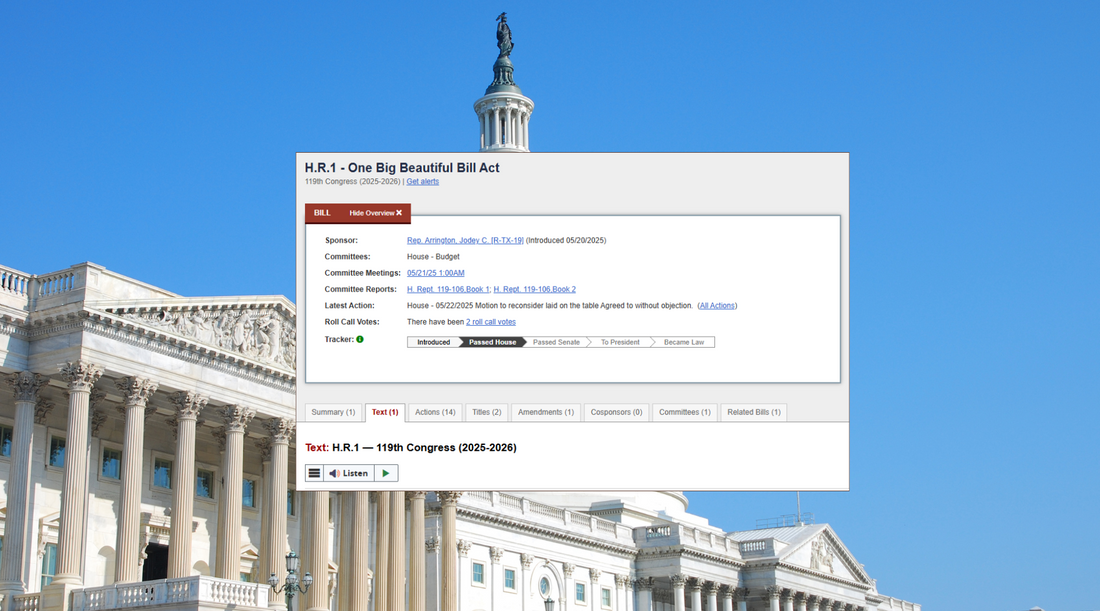For years I have written about how the federal government’s definition of “medical care” requires involvement of a licensed physician or health care professional; wellness products and services were never part of the “medical care” world but always treated differently by the U.S. tax code. See for example my article on Defining the Field of Wellness Law.
Yet, in a startling move toward promoting more wellness, and with help in part from advocates like Dr. Amy Bantham, the Internal Revenue Code may now recognize physical activity as a qualified “medical expense” worthy of Health Savings Account (HSA) reimbursement. CAVEAT: This is ONLY if the Big, Beautiful Bill Act actually passes in the U.S. Senate without any major changes to this part of the Bill, which at this point is questionable.
Bill Background
On May 22, 2025, the U.S. House of Representatives passed H.R. 1, known as the "One Big Beautiful Bill Act." Among its numerous provisions, Section 110208 stands out by proposing an expansion HSA eligibility to include certain physical activity expenses. You can view a copy of the Bill here.
Understanding Section 110208
Traditionally, HSA funds have been restricted to covering qualified medical expenses. Section 110208 seeks to broaden this scope by allowing individuals to use HSA funds for specific fitness-related expenses.
Key Provisions:
Eligible Expenses: The section permits HSA funds to be used for:
- Membership fees at fitness facilities. These facilities cannot be private clubs that offer golf, hunting, sailing, or riding facilities.
- Participation or instruction in physical exercise or physical activity. Note: these activities must be regular group activities, not one-time classes. See page 851 of the Bill.
Exclusions: Not all fitness-related expenses qualify. The following are excluded:
- Videos, books, or similar materials.
- Remote or virtual instruction unless it's live.
- One-on-one personal training sessions.
Limitations: There's an annual cap on these expenditures:
- $500 for individuals.
- $1,000 for families.
- The monthly limit you can use for physical activity expenses from your HSA account cannot exceed 1/12 of the annual cap. So, for individuals, the most you can spend on physical activity fees from your HSA account is $41.66. Something is better than nothing, though, right?
These changes are set to take effect for distributions made after December 31, 2025.
Implications for HSA Holders
This expansion recognizes the role of physical activity in preventing chronic diseases and promoting overall health. By allowing HSA funds to cover certain fitness expenses, individuals are incentivized to engage in healthier lifestyles.
Considerations:
- Verification: HSA holders should ensure that their fitness expenses fall within the eligible categories to avoid potential tax penalties.
- Documentation: Maintaining receipts and records of qualifying expenses will be crucial for tax purposes.
- Employer Plans: Those with employer-sponsored HSAs should consult their plan administrators to understand how these changes integrate with their specific plans.
Broader Context for Wellness Providers
Section 110208 aligns with broader legislative efforts to promote preventive health measures. By financially supporting physical activity, the government acknowledges its importance in reducing healthcare costs and improving quality of life. Hopefully, this is only the beginning of government efforts to allow tax-favored accounts to pay for wellness products and services.
Subscribe for Updates! The Center for Health and Wellness Law is a legal consulting firm dedicated to protecting access and maintaining compliance for health and wellness providers.
